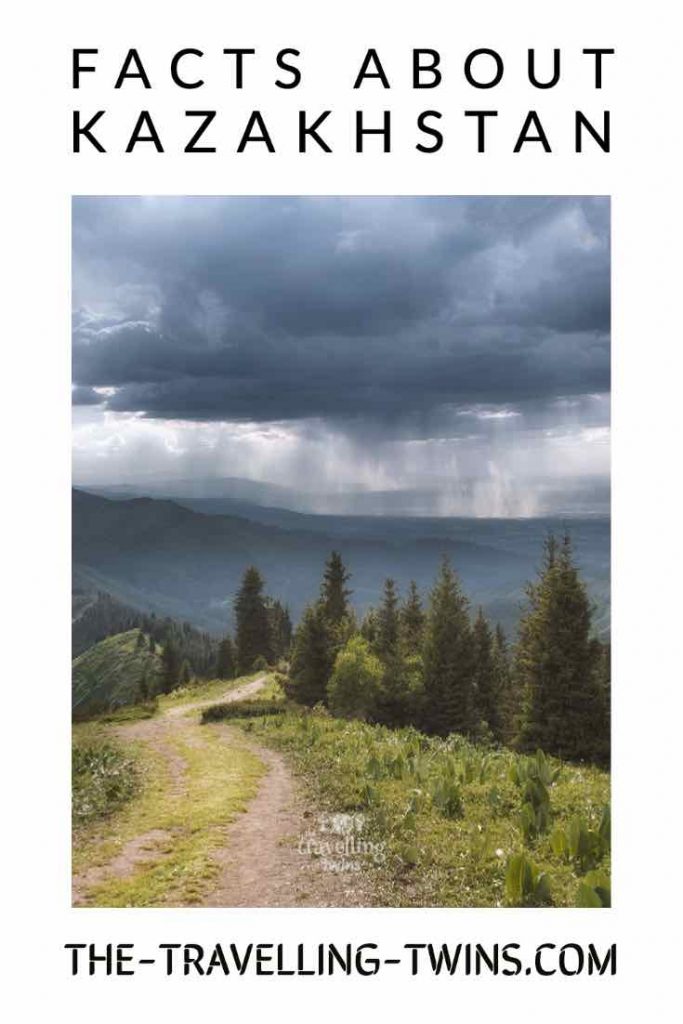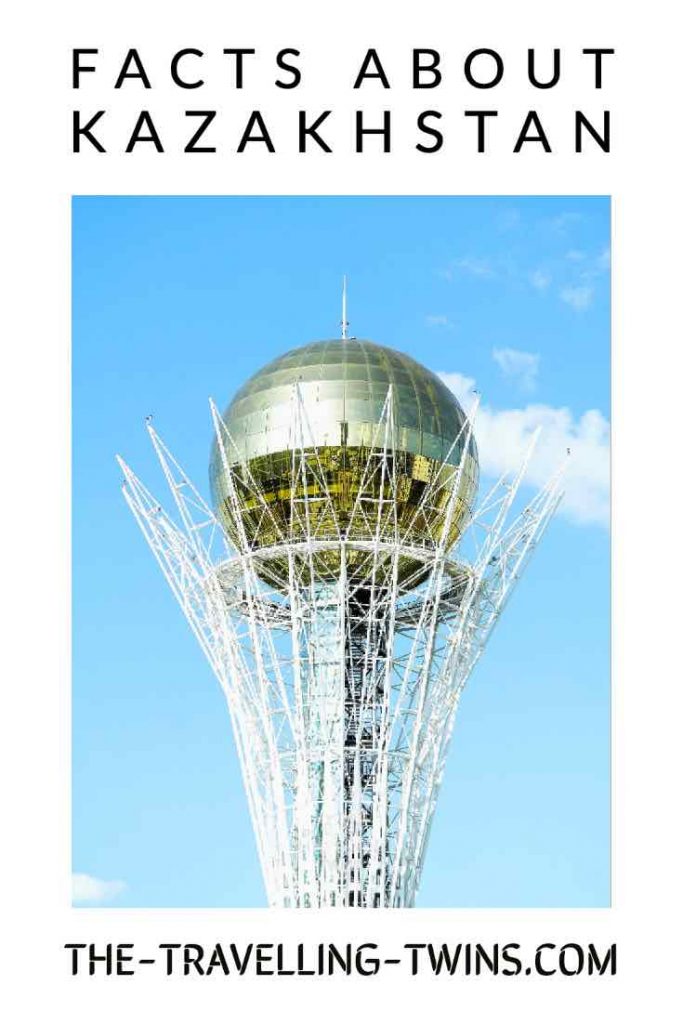Kazakhstan became famous around the world with the release of the comedy movie Borat. This film, starring Sasha Baron Cohen and released in 2006, left a big impression on the world, but it portrays somewhere very different from Kazakhstan, where I met my (English) husband. So other than Borat, what is Kazakhstan famous for?
We lived in Kazakhstan for a few years and learnt some interesting facts about Kazakstan.
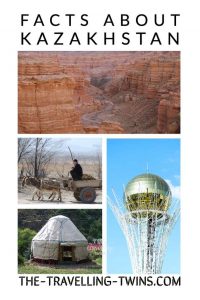
Kazakhstan’s location and neighbours
Kazakhstan is located in Central Asia and shares borders with Russia, China, Kyrgyzstan, Uzbekistan, and Turkmenistan.
Read interesting facts about Asia
Kazakhstan is the ninth largest country in the world, and Kazakhstan is the world’s largest landlocked country. With an area of 2,724,900 km2, Kazakhstan is larger than Western Europe.
Fast facts about Kazakhstan
The country official name is the Republic of Kazakhstan.
Kazakhstan lies partly in Europe. The city of Atyrau is one of five cities in the world that lie over two continents.
The Kazakhs are mainly Sunni Muslims who live in cities including Almaty – the old capital and cultural centre situated in the mountain foothills to the south, and Nur-Sultan, the new capital in the northern steppes.
Until 1990 Kazakhstan was part of the Soviet Union.
Nursultan Nazarbayev was the First President of Kazakhstan since it gained its independence from the Soviet Union in 1991 till 2019. Nazarbayev was an enormously popular leader with the Kazakhs despite an openly visible culture of corruption. In honour of Nazarbayev, the capital Astana was renamed Nur-Sultan upon his retirement. The country is a constitutional republic with strong leadership.
Kazakhstan has good relations with Western World and is part of the United Nations
Population in Kazakhstan
There are about 18 million people living in Kazakhstan, most of whom are native Kazakh. Other ethnic groups include Russians, Uzbeks and Ukrainians. Non-Kasakh residents of Kazakhstan are known as Kazakhstanis.
Kazakhstan has a very young demographic, with over 70% of the population below the age of 44.
The official state language is Kazakh which is a Turkic language originally written in Arabic script. Since incorporation into the USSR, Kasakh was transliterated into Cyrillic – like the Russian alphabet but with an extended character set to accommodate the Turkic language sounds.
As a result of the Soviet Union, Russian is still the most widely spoken language in towns; however, there are almost 10 million Kazakh speakers nationwide. In 2017, the president announced that written Kazakh would change from using the Cyrillic to the Latin alphabet by 2025 – again with an extended character set. Bilingual signage, which includes Russian, is being phased out.
Kazakhstan is one of the most sparsely populated countries on Earth; It has an average of just 17 people per square kilometre.
Unesco World Heritage sites in Kazakhstan
Kazakhstan is home to three UNESCO World Heritage Sites, including the Mausoleum of Khoja Ahmed Yasawi, the Saryarka plains – an enormous birdwatching site and Tamgaly with 5,000 ancient rock carvings.
Facts about Kazakh culture and people
The Kazakh culture is probably the most interesting thing about Kazakhstan. With its nomadic past and ancient traditions, Kazakhs are definitely a cultural group worth learning more about!
Kazakh tribes are nomadic people who live in the Central Asian steppe. All Kazakhs will tell you that they are directly descended from the Mongolian emperor Genghis Khan (as he had 3,000 concubines, this is perfectly feasible).
The Kazakhs have a rich culture with ancient traditions, especially in fabrics, decorative motifs and dance, from the times when they used to be led by a sultan or paramount king called Konurbaia.
Archaeologists working in Kazakhstan unearthed a remarkable gold-clad Scythian warrior whose clothing and jewellery was still intact after more than 2,000 years.
Different archaeological excavations discovered the graves of female warriors, suggesting that Kazakhstan may have been the home of the legendary Amazon tribes.
Kazakhstan was on the famous silk route with two ancient cities – Taraz (Aulie Ata) and Hazrat-e-Turkestan.
The modern Kazakh’s self-image is of a proud warrior on horseback with a golden eagle on his arm. You don’t have to drive very far into the steppes today to see eagles and herds of horses, so the tradition is not so far from the truth. Blocks of apartments in the cities are built on the Soviet model six or nine stories high, with open balconies. It is common to hear the urban myth that someone’s neighbour keeps a horse on his balcony.
Kazakhs are proud of their nomadic heritage when they lived in circular demountable structures called yurts, on a light wooden frame and clad in horsehair felt. The central structural circle at the top of a yurt is called the shanyrak. It is the central icon on the Kazakh national emblem, flanked by two winged horses, another symbol of the nation’s nomadic past.
It is common today to find lavishly upholstered yurts erected like marquees and pavilions for weddings and events, not to mention those still in use for storage and animals in rural areas – and by some remaining nomads in Kazakhstan and Uzbekistan.
A brief history of Kazakhstan
Kazakhstan was originally inhabited by nomadic tribes.
From the 13th century, the land of today’s Kazakhstan was invaded by the Mongols, who later created Kazakh Khanate, which existed from the 15th to 18th century. In the 18th century, Russia slowly took over Kazakhs and later, Kazakhstan became part of the Soviet Union.
During the time of the USSR, the Soviet Republic of Kazakhstan was supposed to be an agriculture provider to the union in the program known as Virgin Land Production. During this time, many Russians and Poles were relocated to Kazakhstan. The old capital of Almaty is known as the place where the purest Russian is spoken, allegedly because so many intellectual dissidents were deported there.
In 1991 when the Soviet Union collapsed, Kazakhstan declared independence.
Kazakhstan geography
Kazakhstan is home to several mountain ranges, including the great Tian Shan Mountains Range in the southern border with Kyrgystan. The Tian Shan (Chinese “Sky Mountains”) are 4,000m high and form a beautiful snow-capped backdrop to Almaty. They are known in Russian as the Zailisky Mountains because when Russians came from the north, they were first seen Za (behind) the Ily (river).
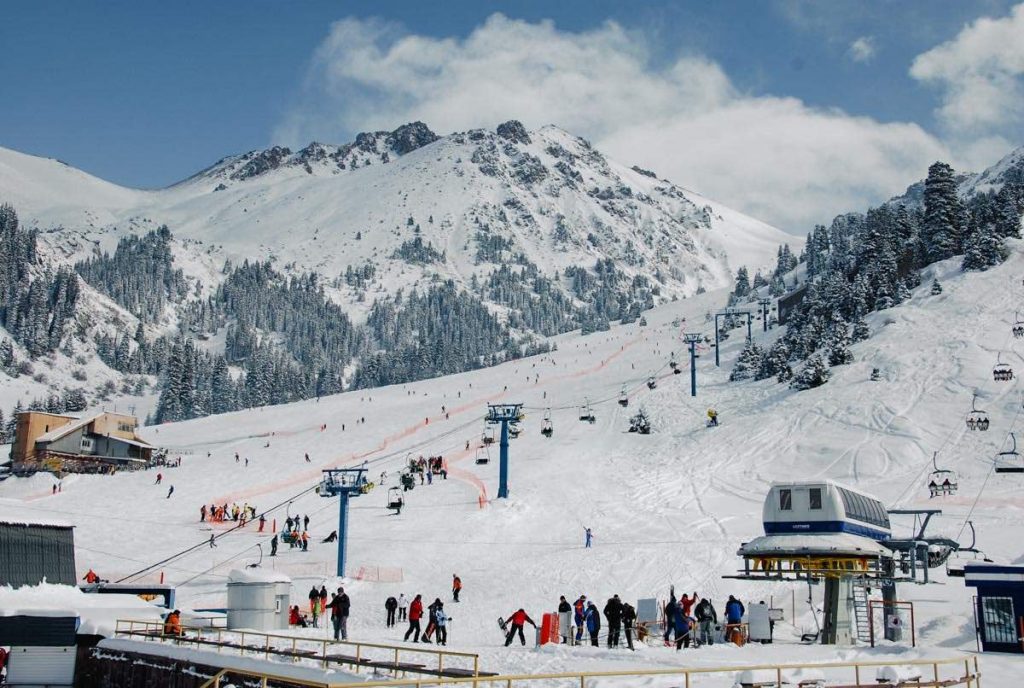
The Altai Mountains are also in the southeast, and the Urals are in the extreme west. Most of the rest of the nation is a vast grassland known as the steppe.
Lakes in Kazakhstan
Kazakhstan is home to some of the largest lakes
Kazakhstan is a landlocked country but has access to the Caspian Sea – the largest inland body of water and hence also known as the largest lake in the world.
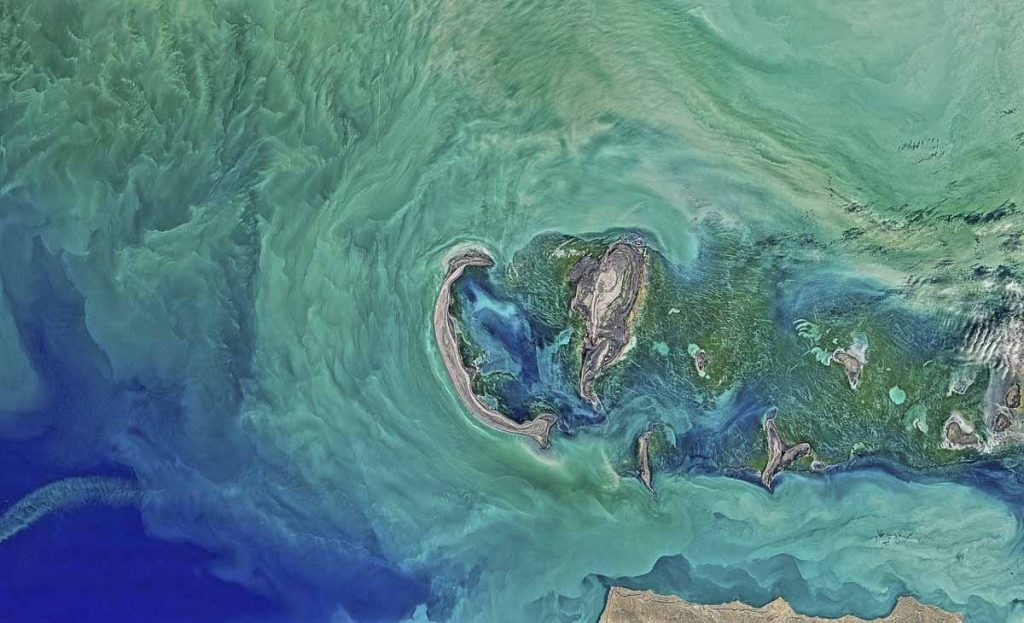
Kazakhstan is home to another enormous lake – Lake Balkhash, located in eastern Kazakhstan. Lake Balkhash is unusual for being half fresh water and other half salt water, it is as well the 15th largest lake in the world
Not so fortunate is the sad Aral sea, another vast lake to the southwest but now mostly a salt wasteland owing to freshwater having been drained by soviet irrigation schemes. Attempts were made to reflood the sea in the 1980s, but water levels are reported to be falling again, and the fishing villages are again becoming derelict.
Rivers, steps and canyons
The Ural River is an important dividing line between Europe and Asia.
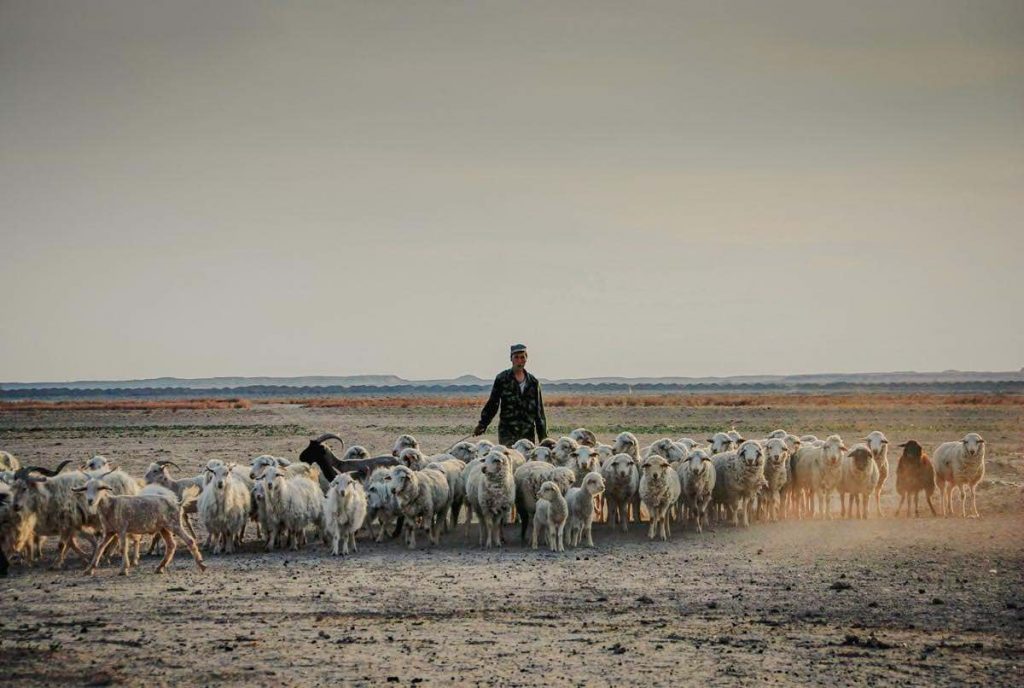
The world’s largest steppe, the Betpak-Dala desert, is also in Kazakhstan.
Sharyn Canyon, a few hours drive east from Almaty, is Asia’s largest canyon.
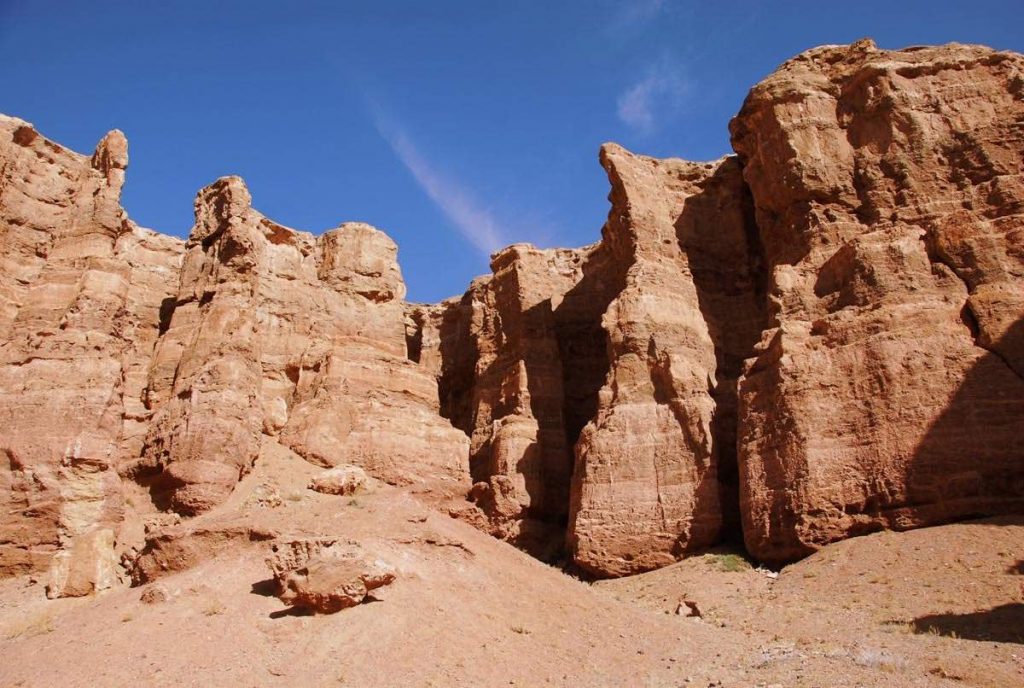
Kazakhstan is home to some of the most fertile arable land in the world. This makes it a particularly important region for agriculture, and Kazakhstan is one of the leading producers of wheat and other grains in the world.
Apple trees, poppies and tulips
Kazakhstan is famous for producing apples on the fertile northern slopes of the Tian Sian, where you can still find huge orchards of wild apple trees. The name of the city of Almaty you can translate to “full of apples.”
Wild poppies grow on the steppes forming a magnificent red carpet in late spring, and tulips are also native to these regions, long before they were introduced to the Netherlands.
Facts about Kazakh cuisine
Central Asian cuisine includes dishes like pilaf (rice and meat) and beshbarmak – comprising boiled horse meat (eventually goat or lamb) and noodles like tagliatelle. Beshbarmak means “five fingers” after the way it is traditionally eaten.
Our favourite Central Asian dishes include Lagman which is rather like a heavy pasta bolognese and then fried up – noodles and sauce together – in meat juices, so it is even more delicious and Manty which are a kind of large juicy lamb ravioli and impossible to stop eating until the plate is empty.
Traditionally Kazakhs were nomads, and their horses provided transport, clothing, yurts, milk, leather and of course, horse meat which is still commonly eaten. Kazakhs also eat camel meat (Kazakh camels are two-humped Bactrians)
Fermented horse milk called kumis is Kazakhstan’s national drink. It’s sour, slightly alcoholic and to me, quite undrinkable. My husband made the mistake of drinking his very fast at a Kazakh feast to get rid of it, whereupon our host expressed delight and immediately refilled his cup. Camel milk (shubat) is less acrid. If you want to read about other weird food, check our post about the weirdest food around the world.
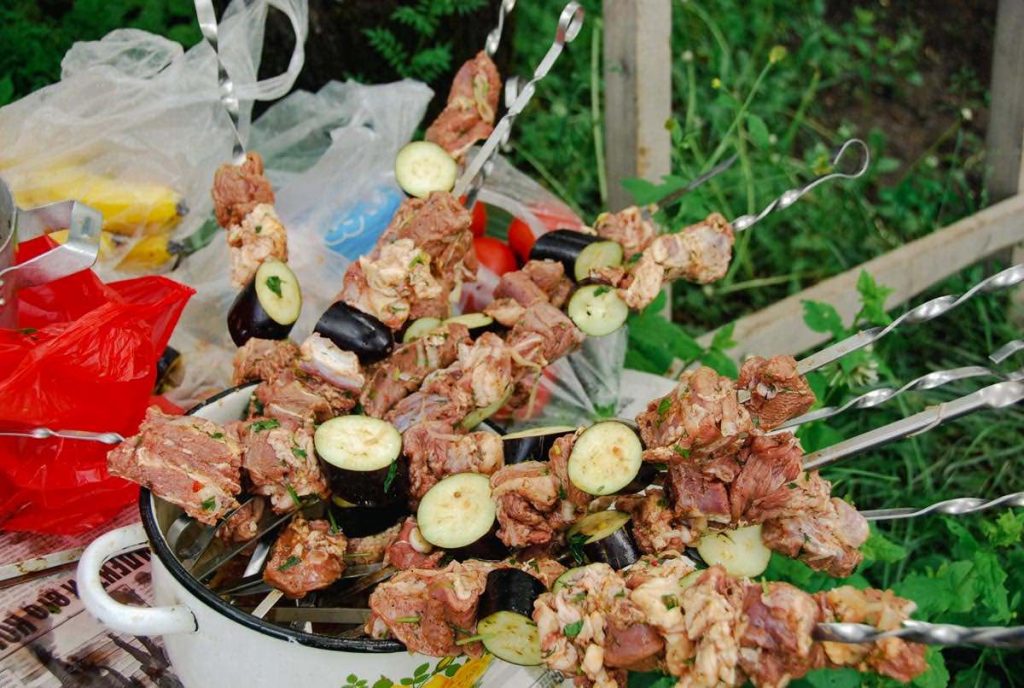
Animals in Kazakhstan
Kazakhstan is home to a variety of animals, including the endangered snow leopard. Other animals you might see in this country include Bactrian camels, yaks, deer, and wolves.
While driving around, you will easily spot herds of horses and occasional golden eagles.
Climate in Kazakhstan
Kazakhstan’s climate is “extreme” – continental, having hot, dry summers and cold winters. The capital Nur-Sultan is the second coldest city in the country, behind Ulaan Bátar. We remember winter temperatures in Nur-Sultan (Central Kazakhstan) as being typically 40 degrees below zero. The snow had to be cleared from the streets by vast trucks – there was no chance of melting it with grit salt! Summers would give temperatures of up to 30 or 40 degrees centigrade.
Kazakhstan’s economy and Natural resources
Kazakhstan has one of the highest GDP per capita in Central Asia. It is a major producer of oil and natural gas. It is said that in Kazakh soil, you can find all minerals from the periodic table of elements!
It has one of the largest oil reserves in the world, but it’s also rich in minerals, including uranium, coal, iron ore and zinc.
In 2015 with ageing soviet coal-fired power stations providing district heating to its cities, Kazakhstan was a major greenhouse gas emitter worldwide. Realising this, the government passed laws in 2016 and 2017 promising change. With vast plains, hot summers and a small population, Kazakhstan could easily provide all its domestic energy requirements from solar and wind power. It has set a target of 50% reduction (from 2012 baseline) in greenhouse gas emissions by 2050
Thanks to its rich mining and agricultural resources, Kazakhstan was the first former Soviet republic to pay back its debt to the International Monetary Fund.
The Capital of Kazakhstan
Why has Nur-Sultan/Astana/Akmola/ Tselinograd changed its names so many times?
The current capital of Kazakstan was established as a military outpost in 1830 under the name Akmola, which literally translated as White Tomb. During the Soviet era, the town changed its name to Tselinograd. After Kazakhstan independence in 1991 city came back to its original name Akmola, but when President Nursultan Nazarbayev moved the capital from Almaty to Akmola, as a strategic move closer to the Russian border to discourage Russia from claiming northern territory, he decided to change the “unfortunate name” of White Tomb to Astana, which in Kazakh means capital city.
In 2019 Astana changed its name again, this time to Nur-Sultan, to celebrate the career of president Nursultan Nazarbayev. Meanwhile, Nur-Sultan’s airport still retains the code TSE.
Kazakhstan’s former capital, Almaty remains the nations’ cultural capital – as the Kazakhs say, Astana may be the capital, but Almaty is Kazakhstan’s heart.
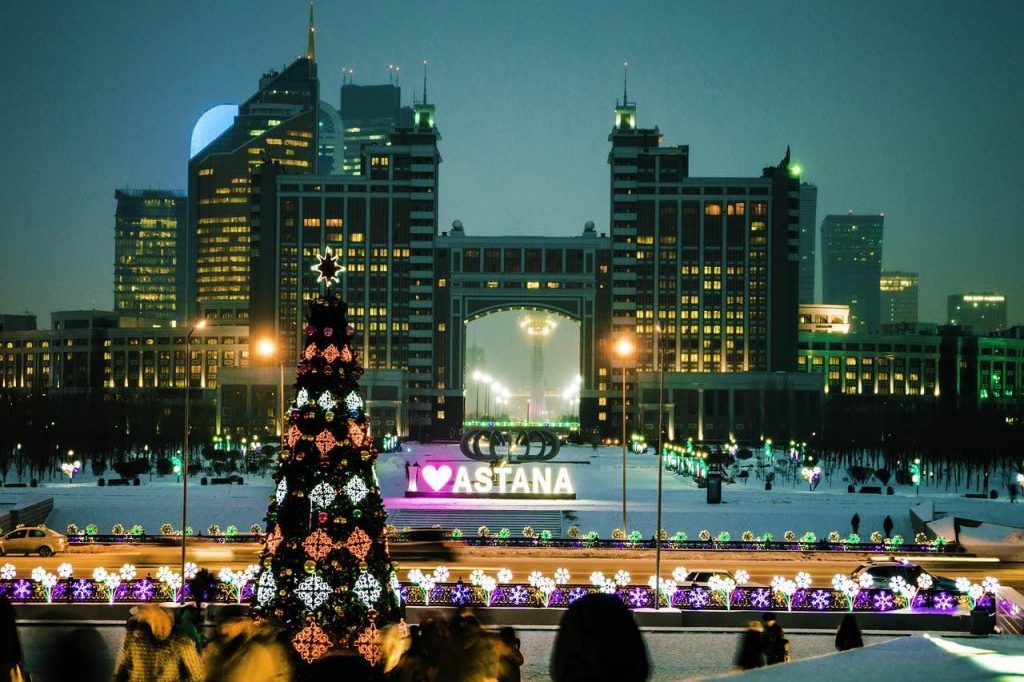
In 2017 Astana hosted Expo themed “Future Energy”
The roots of the Soviet Space Program are actually in Kazakhstan
Baikonur cosmodrome is a Russian spaceport located in southwestern Kazakhstan. It was founded in 1955. Yuri Gagarin, the first man to journey into space, took off from Baikonur on April 12, 1961.
Also, Sputnik 1 – the first artificial satellite was launched from here.
Baikonur spaceport has been leased to Russia until 2050 and is operated by the Russian Federal Space Agency. It is Russia’s launch site for all manned trips to International space station missions. Civilians can visit Baikonur cosmodrome for a trip to the historical site or see rocket launches.
Kazakhstan – “The Funny facts”
In 2012 during an international rifle shooting competition in Kuwait, the Kazakh team won the gold medal. Instead of the Kazakh national anthem, the spoof anthem featured in the Borat movie was played by mistake. Apparently, during the same competition, the Serbian National Anthem was also played wrongly. Read more on BBC about it
Medeu – the sports complex near Almaty has the highest skating rink in the world – 1,691 metres above sea level.
Kazakhstan also has the tallest chimney in the world. The GRES-2 Power Station in Ekibastuz boasts a chimney 420 meters high.
Kazakhstan facts – Pin it for later
Privacy Policy Disclaimer
This website uses affiliate links for income and support.
If you like our website, please consider using these links. You will be directed to the vendor, and we will get a small commission on your purchase price at no increased cost to you.
We have researched facts stated here as far as practicable but please check anything critical before committing your time and money. We do not claim any special knowledge or expertise, and we are not consultants for our readers.
